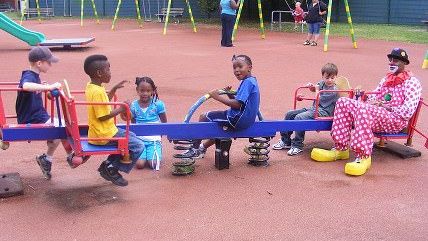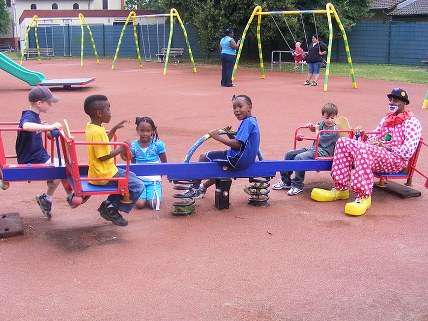Spontaneous Order on the Free-Range Playground


New Zealand has encountered the same problems with playground bullying and acting out as schools in the United States, and has responded with the same tightening web of red tape we've seen in the northern hemisphere. "There was so many ridiculous health and safety regulations and the kids thought the static structures of playgrounds were boring," commented Professor Grant Schofield. As Director of the Human Potential Centre at Auckland University of Technology, Schofield was in a position to do something about that. Along with colleagues at Otago University, he came up with a research project involving reducing or even eliminating playground rules and letting the kids set their own limits. Then they actually persuaded schools to sign on to what constituted an experiment in free-range parenting. The results aren't surprising to those of us who ran free in our own childhoods, which is to say they're very encouraging.
Writes Marika Hill at Stuff.co.nz:
Ripping up the playground rulebook is having incredible effects on children at an Auckland school.
Chaos may reign at Swanson Primary School with children climbing trees, riding skateboards and playing bullrush during playtime, but surprisingly the students don't cause bedlam, the principal says.
The school is actually seeing a drop in bullying, serious injuries and vandalism, while concentration levels in class are increasing.
Principal Bruce McLachlan rid the school of playtime rules as part of a successful university experiment.
"We want kids to be safe and to look after them, but we end up wrapping them in cotton wool when in fact they should be able to fall over."
Letting children test themselves on a scooter during playtime could make them more aware of the dangers when getting behind the wheel of a car in high school, he said.
"When you look at our playground it looks chaotic. From an adult's perspective, it looks like kids might get hurt, but they don't."
Youth is a relatively low-risk time to test your limits and discover what hurts and what doesn't. Kids are practically rubber, so when they fall down off a bike or out of a tree, it may be a jolt, but it's unlikely to do permanent damage. The lessons they learn about what's fun and what's painful can be retained for later in life when the stakes are higher. I know that I gained a relatively low-cost understanding of the world wandering the streets unescorted as an eight-year-old than I would have if I'd been "protected" from the world around me, and I suspect the same is true of most kids everywhere.
And, of course, kids get to burn off a lot more steam when they play free than they do when adults ban tag and running. Those rules are imposed by adults who live in fear that children will damage their little selves, but that leaves the tots chock full of unreleased energy and uncertain of the limits of their worlds—limits they'll have to discover when they're older and the consequences can be more severe (or else they won't discover at all as they internalize the fear in which they've been marinated).
Principal Bruce McLachlan told TVNZ that resistance to the free-range experiment came not from parents, but from teachers who were afraid they'd be blamed for any injuries the kids suffered. Not that parents can't be control freaks themselves—the term "helicopter parent" evolved for a reason—but nothing embodies fear of risk like a bureaucrat. And it's hard to get in trouble for piling on more rules rather than stripping away the ones that cause problems.
The New Zealand research has yet to be published, and it will be interesting to see the formal results. In fact, the research was originally intended to just encourage more activity, and the behavioral improvements were unexpected gravy.
Grant Schofield is also something of a paleo guy on his Twitter feed and blog, Reasonoids may be interested to know.
(H/T CharlesWT)




Show Comments (34)